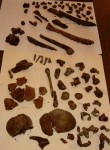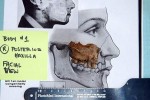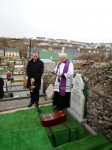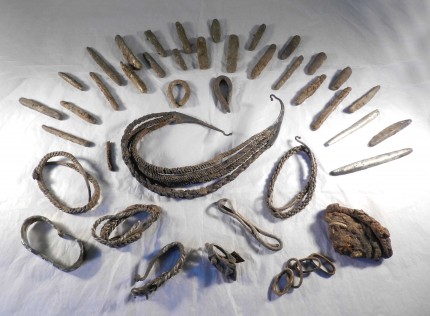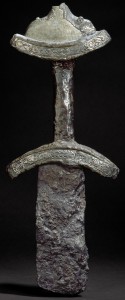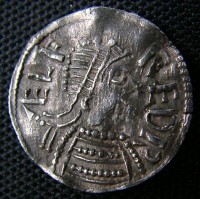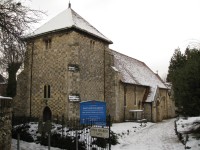 The unique sapphire and gold ring discovered in Escrick, a town six miles south of York, by metal detectorist Michael Greenhorn in 2009 may be as much as 600 years older than previously believed. It also may be of continental European, probably French, origin and worn by royalty, not by a lord of the Church.
The unique sapphire and gold ring discovered in Escrick, a town six miles south of York, by metal detectorist Michael Greenhorn in 2009 may be as much as 600 years older than previously believed. It also may be of continental European, probably French, origin and worn by royalty, not by a lord of the Church.
The ring’s mixture of styles and materials from different periods has befuddled researchers ever since it was discovered. Although there are no rings like it to make for a viable comparison, the layout, the gold beading, the use of the sapphire, garnet slivers and cloisonné red glass, initially suggested a date in late 10th or 11th century. The combination of red glass and blue glass in a gold setting, however, is typical of early Anglian jewelry (7th – 9th centuries) but they didn’t use sapphires. Experts thought the anomalous sapphire might have been a later addition replacing a blue glass element to increase the value of the ring and make it worthy of royalty.
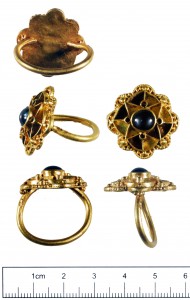 In an attempt to answer some of the questions raised by this unusual piece, the University of York and the Yorkshire Museum held a workshop at the end of January at which leading experts from all over the country convened to see the Escrick ring in person and discuss its dating. Their new theories moved the date and location of manufacture and excluded the possibility that it had belonged to a bishop rather than a king.
In an attempt to answer some of the questions raised by this unusual piece, the University of York and the Yorkshire Museum held a workshop at the end of January at which leading experts from all over the country convened to see the Escrick ring in person and discuss its dating. Their new theories moved the date and location of manufacture and excluded the possibility that it had belonged to a bishop rather than a king.
The workshop was attended by more than 30 experts from across the country. After a day of talks, presentations and discussions the main theories were that the ring was of a style similar to others found in Europe in the 5th or 6th centuries.
This link to Europe and the fact nothing has been found like it in Britain before, suggest that is where it was made. When checking for other examples of ring from this period, none similar were found to belong to Bishops, which suggests it would have belonged to a King, leader or consort.
The sapphire in the ring was probably cut earlier, possibly during the Roman period, but the ring itself was specially made around the sapphire. By looking at the wear on the ring it is thought that it was worn for at least 50 years before it was lost.
There could be another explanation for the stylistic anomalies. For instance, the ring may have been created later, the 8th or 9th century, say, but was inspired by 5th or 6th century designs. The inspiration need not have been jewelry either. It could have been local Yorkshire stonework.
It may also have had a previous life as a brooch. The hoop of the ring looks different from the crown. It may have been attached later to convert a brooch into a ring.
The research continues. Archaeologists and historians from the University of Durham will do further investigations of the find location for any information from the 5th or 6th centuries. The ring itself will be examined with X-ray technology and samples will be taken from the good hoop to compare it to the gold in the crown of the ring. Researchers hope some hard data will help eliminate possibilities and maybe even give us some concrete answers to solve the mysteries of the Escrick Ring.

